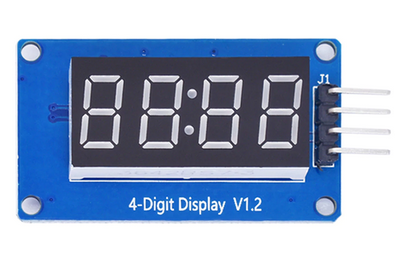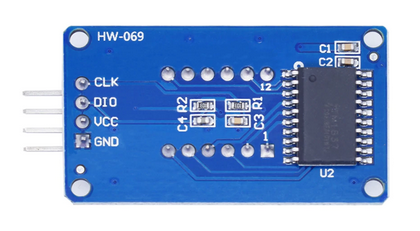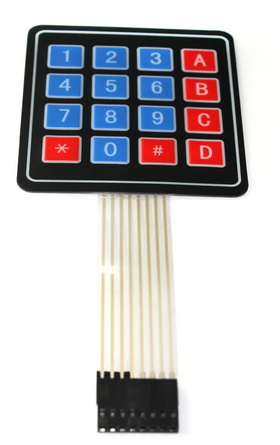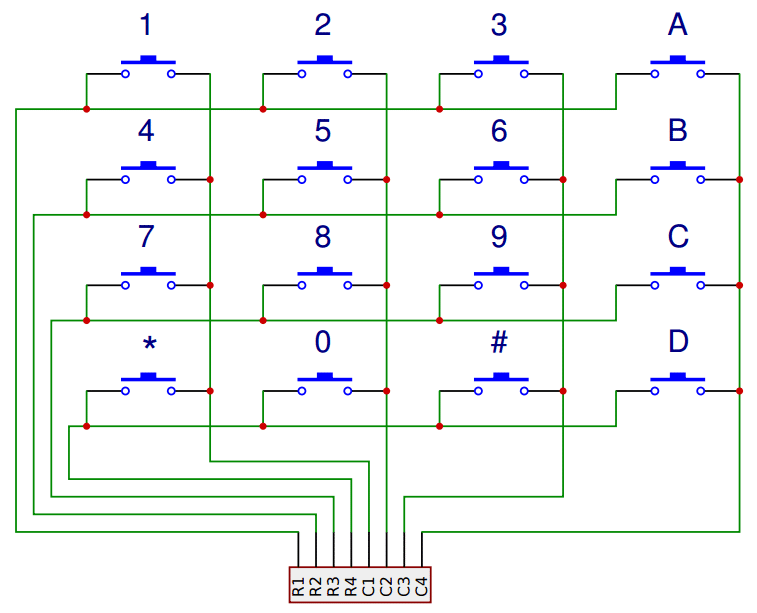Seven Segment Display and Keypad
The Seven Segment Display and its TM1637 controller
There is a nice and simple seven segment display controlled by a TM1637 controller, which can be used e.g. as a clock display. It provides 4 digits and a colon dividing digits 1 and 2 from digits 3 and 4, such that the first two digits can be used to display hours, the last two digits to display minutes and the colon can be set blinking at a 1 Hz rate. Of course you can also use it for other purposes like displaying the voltage values of a voltmeter.
As can be seen from the back view of the module, interfacing to the ESP32 is pretty simple. Here are the connections I use:
The data sheet for the TM1637 controller can be found at
https://www.mcielectronics.cl/website_MCI/static/documents/Datasheet_TM1637.pdf
.
The TM1637 uses a proprietary 2-wire serial protocol with a data line (dio) and a clock line.
Exercise 1:
Carefully read the data sheet.
Write a driver implementing the serial protocol. Check the acknowledge signal from the controller to make sure the data have been correctly transmitted. The signals on the dio and the clk lines must be programmed setting the corresponding GPIO pins. Serialization is also done in software.
Write a test routine that displays 1234 on the seven segment digits.
Exercise 2:
Modify exercise 1 to implement a blinking colon
Exercise 3:
Read the current time from the ntp and implement a clock displaying hours and minutes. Make the colon blink at a 1 Hz rate.
The Keypad
The keypad has a total of 16 switches. These are connected to 8 pins organized as 4 rows and 4 columns.
The job will be to find out which column makes a connection to which row in order to find out which switch is closed. This can be done by connecting e.g. the 4 row pins to GPIO outputs and the 4 column pins to GPIO inputs with pull-ups.
Set the first row pin to low and check on each column pin if you read a zero. If you do, you have found the switch closed. If not, continue the same procedure on the other row pins.
Comments







